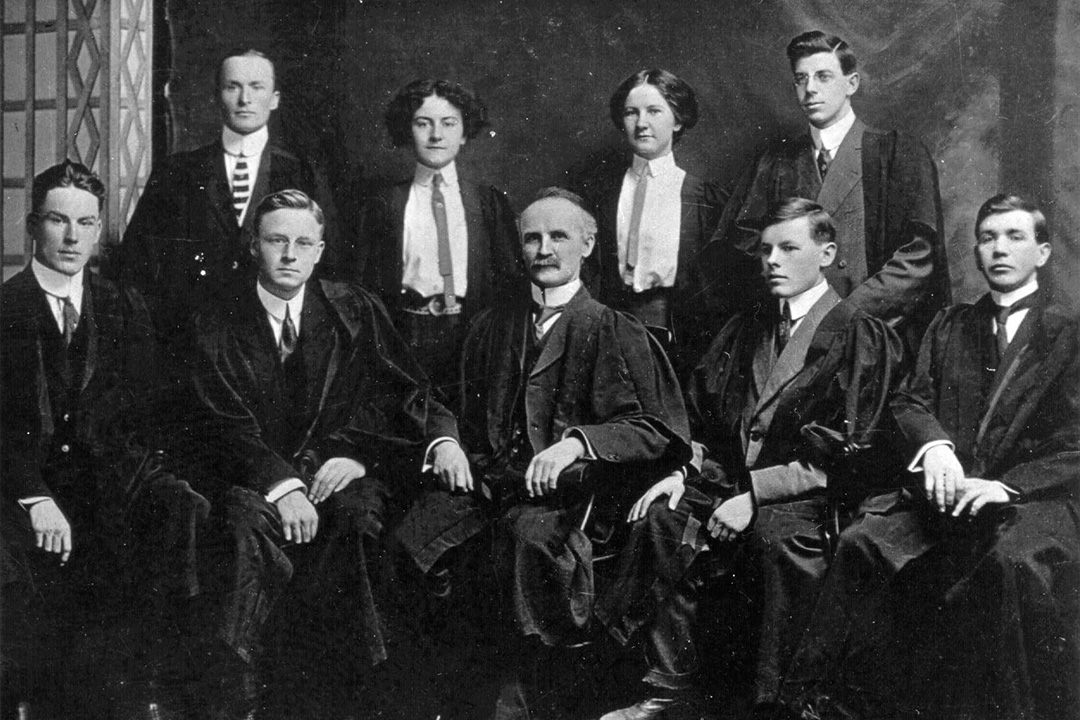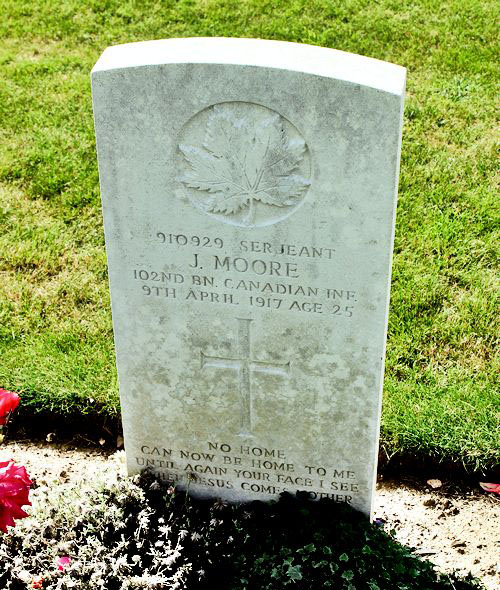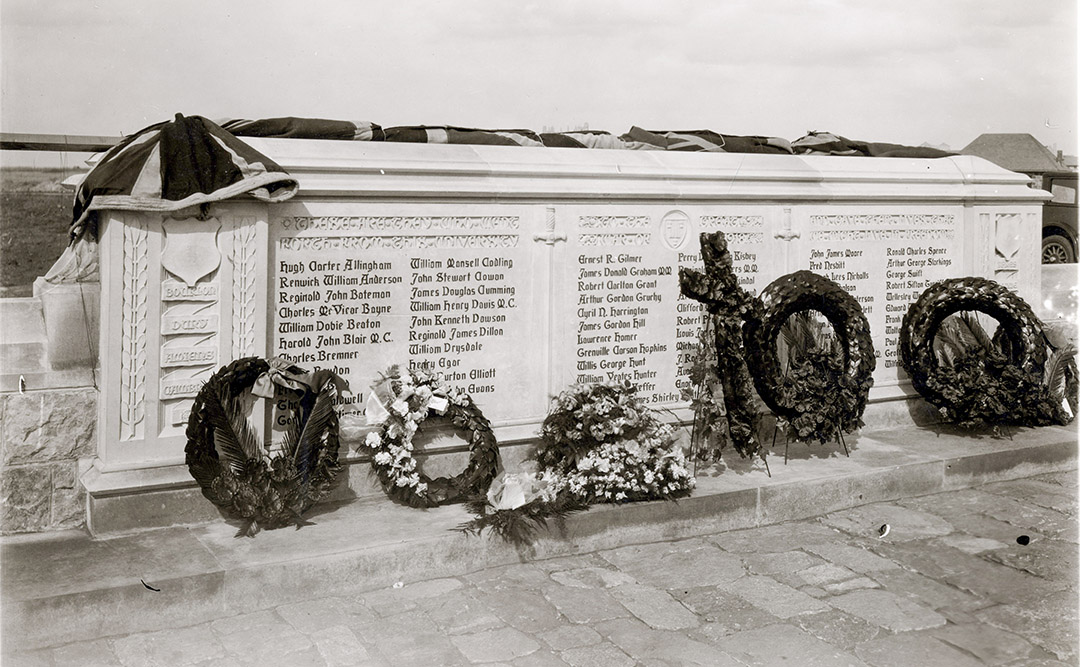
USask remembers: Sergeant Moore, the Class of 1912
As the University of Saskatchewan (USask) prepares for its annual Remembrance Day service at the Memorial Gates on Friday, Nov. 11 at 1:30 pm, USask remembers the service and sacrifice of former student John James Moore.
By James ShewagaJohn James Moore was a member of the historic Class of 1912 – one of seven students who made up the University of Saskatchewan’s (USask) first graduating class 110 years ago.
Five years later, Sergeant Moore would become one of seven former USask students killed during the epic battle of Vimy Ridge in the First World War, paying the ultimate price on April 9, 1917. In all, 3,598 Canadians were killed and more than 7,000 wounded during the four days of battle around Vimy Ridge in northern France.
In famously describing Canada’s historic but costly victory at Vimy Ridge, Brigadier-General Alexander Ross would later state, “I witnessed the birth of a nation.”
Today, Moore lies near where he fell more than a century ago, buried at the Canadian cemetery a kilometre away from the towering Canadian Memorial at Vimy, forever memorializing the Canadian troops who finally captured the pivotal position in the historic and symbolic battle.

“Because all four Canadian divisions attacked together and all regions of Canada were present in the battle, Vimy became a symbol of what Canadians could do together,” wrote historian Tim Cook in his book Shock Troops: Canadians Fighting The Great War 1917-1918.
Born in Fort Qu’Appelle and raised in Prince Albert, Moore was one of the 345 USask students, staff, faculty, and alumni members who served overseas during the Great War, and one of the 69 who never made it home. The son of Reverend W. S. Moore and Jeanie W. Moore of Prince Albert, John Moore earned a bachelor’s degree at USask with a focus on law, while also serving as president of the university’s Literary Society and as a member of the YMCA executive. A superb athlete, Moore also excelled in boxing and soccer at USask, helping lead his soccer squad to a league championship.
Four years after graduating, he returned to Saskatoon to join the war effort overseas, enlisting with the USask-based 196th Battalion, and quickly earning promotion to sergeant. After arriving in England, Moore was transferred to the 102nd Canadian infantry battalion, a unit that would find itself on the front lines in the heart of the battle for Vimy Ridge in France in the spring of 1917. The four-day battle began at 5:30 am on Easter Monday, with Moore falling on the first day of the attack.
Despite only having 490 students and faculty on campus at the beginning of the First World War in 1914, 27 faculty and staff, 253 students and 65 alumni of USask volunteered to serve in the First World War, with the School of Engineering closing the doors in 1916-17 when the vast majority of students, faculty and staff enlisted in the war effort. In all, with 68 students and one faculty member – Major Reginald Bateman, the university’s first English professor – were killed in action, with more than 100 wounded and 33 awarded medals of valour.

Former USask President Walter Murray paid tribute to the service and sacrifice of members of the campus community in his letter dated Oct. 21, 1916, to Captain John Ross MacPherson – who earned a bachelor’s degree at USask before entering the war.
“I think the university boys have done wonderfully,” President Murray wrote. “… You have paid a very heavy price for it, but we are intensely proud of your achievements.”
Captain MacPherson never came home, one of the 69 volunteers from the university who paid the ultimate price, killed in action in France on Aug. 26, 1918, at the age of 28. Just eight days later, Major Bateman was also killed, falling on September 3, 1918, just two months before the end of the Great War. Bateman is one of the 11,000 names of Canadians enshrined on the Vimy Memorial, just a kilometre away from where his former USask student, Sergeant Moore, lies forever at rest.

